Cricket
‘I Feel for Hardik’: Krunal Says There Was Only One Pandya That Was Supposed to Win
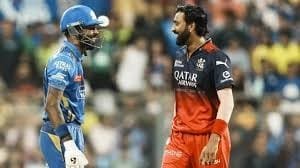
Contents
Introduction to the Pandya Brothers
The Pandya brothers, Hardik and Krunal, are prominent figures in Indian cricket, recognized not only for their remarkable skills on the field but also for their strong familial bond. Both players have made significant contributions to Indian cricket, each carving out a unique identity while sharing a common platform of talent and determination. Their rise through the ranks showcases a journey marked by hard work, resilience, and mutual support, highlighting the harmonious relationship they maintain despite the competitive nature of professional sports.
Hardik Pandya emerged as a dynamic all-rounder, gaining acclaim for his explosive batting and effective bowling. Making his international debut in 2016, Hardik quickly became a key player for the Indian team, especially in limited-overs formats. His ability to turn matches around with his aggressive style and ability to perform under pressure has earned him significant recognition and a loyal fan base. His performances in the Indian Premier League (IPL) have further solidified his status, where he is celebrated for his game-changing contributions.
On the other hand, Krunal Pandya, a versatile cricketer, has also carved a niche for himself in the cricketing world. Following his brother’s footsteps, Krunal made his international debut in 2018 and has showcased his skills as a solid all-rounder. With an innate ability to score crucial runs and take wickets, Krunal has made a name for himself, particularly in the shorter formats of the game. His achievements in the IPL have played a crucial role in the success of his team, allowing him to gain recognition beyond the domestic arena.
The camaraderie between the brothers is noteworthy; they often speak highly of each other’s talent and work ethic. Their competitive spirit is evident in their performances, yet their support for one another underscores a familial bond that remains strong amid the challenges of professional sports. As this exploration of their journeys reveals, the Pandya brothers’ stories are interwoven with mutual respect and a shared passion for cricket, establishing a narrative that resonates deeply with fans and budding cricketers alike.
The Context of the Statement
In the world of competitive sports, emotions often run high, especially when revered athletes showcase their talents on a grand stage. The recent comment made by Krunal Pandya expressing sympathy for his brother Hardik Pandya serves as a poignant illustration of the pressures and expectations athletes endure. This statement was particularly rooted in recent cricket matches where the stakes were elevated, and both brothers were competing in crucial encounters for their respective teams.
During the recent T20 World Cup qualifiers, Hardik faced not only the challenges posed by opposing teams but also the immense pressure of living up to his own reputation as a vital player. Krunal observed the emotional burden Hardik carried throughout these matches, which sparked his feelings of empathy. While both brothers are accustomed to the rigors of competitive cricket, Hardik’s journey during this series seemed uniquely taxing. Observers noted that Hardik’s performance fluctuated under the weight of expectation, showcasing the delicate balance athletes navigate between personal ambition and team responsibilities.
Krunal’s statement came after a particularly crucial match where Hardik’s performance, though commendable, did not align with the spectacular expectations set forth by fans and analysts alike. The overwhelming desire to excel as a prime performer often leads to internal conflicts, resulting in heightened emotional responses. This incident illuminates the pressures athletes face and how familial bonds can offer support and understanding during tumultuous periods.
Ultimately, Krunal’s comments reflected not just a brother’s sentiment, but also a broader acknowledgment of the psychological aspects inherent in competitive sports. It serves as a reminder that behind every athlete lies a struggle for success, acceptance, and the relentless pursuit of excellence.
Krunal’s Reflections on Hardik’s Journey
Krunal Pandya has always been a pillar of support for his younger brother, Hardik, who has navigated a tumultuous yet remarkable journey in the world of cricket. Growing up in the same household, Krunal has had the unique opportunity to witness first-hand the immense pressures and challenges that accompany the life of a professional athlete. From their grassroots beginnings in Vadodara to achieving prominence on the international stage, Krunal believes that Hardik’s journey is symbolic of resilience and determination.
In his reflections, Krunal emphasizes the numerous hurdles that Hardik has overcome. Injuries, personal struggles, and the inevitable scrutiny of public life have been constant companions to Hardik’s career. However, Krunal observes that Hardik has transformed these adversities into opportunities for growth. The journey has not only been about physical prowess but also about mental fortitude. Krunal highlights how Hardik’s ability to stay focused, even in the face of setbacks, reflects a commendable spirit that resonates deeply within the realm of competitive sports.
Furthermore, Krunal shares insights into the brotherly bond that strengthens their relationship amidst a highly competitive environment. The duo has consistently supported each other, both on and off the field. Krunal has been instrumental in providing Hardik with motivational support, especially during challenging times. This emotional connection makes Krunal’s reflections particularly poignant, as he recognizes that success in sports is not merely an individual achievement but often requires a strong support system.
Hardik’s achievements, both statistical and symbolic, serve as a testament to their shared values, emphasizing that their familial relationship is a source of strength and inspiration in a sport that often pits brothers against each other. In the complex narrative of their lives, it is clear that Krunal sees Hardik not just as a brother, but as a beacon of hope and resilience in the face of the relentless pressures of professional cricket.
The Competitive Spirit of the Pandya Brothers
The bond between the Pandya brothers, Hardik and Krunal, epitomizes the complex interplay of competition and camaraderie that often defines sibling relationships in sports. Their journey towards excellence has been marked by an unwavering competitive spirit that has not only pushed each brother to achieve his personal best but also cultivated a shared respect that transcends rivalry. Both players understand that their performances are enriched through this dynamic; each match and milestone serves as a reflection of their intense yet supportive competition.
A notable moment in their history occurred during a T20 match where both brothers showcased their batting prowess. Hardik, known for his explosive style, struck an impressive fifty, only for Krunal to match him with a powerful innings of his own. In post-match interviews, they often express how such instances fuel their competitive nature, indicating that their sibling rivalry serves as a catalyst for their individual successes. The competition is not merely superficial; it enhances their skills and provides an opportunity for personal growth.
Moreover, their contrasting playing styles illustrate how competition can pave the way for a more comprehensive understanding of the game. Hardik’s aggressive approach complements Krunal’s more methodical gameplay, allowing them to learn from each other’s strengths and weaknesses. This symbiosis has been evident in various matches, where they have combined their unique talents to achieve remarkable feats for their team. The mutual motivation stemming from their relationship has led to significant milestones, further establishing them as formidable forces in cricket.
Through their experiences, it becomes clear that the Pandya brothers exemplify how sibling rivalry can coexist with support and respect. Their relationship demonstrates that competition does not diminish personal ties but rather strengthens them, ultimately enriching their journey in the world of professional cricket.
Reactions from Fans and the Media
The recent remarks made by Krunal Pandya regarding his brother Hardik Pandya have stirred a notable reaction from both fans and various media outlets. Social media platforms have become a vibrant arena for discussions, with opinions varying widely. Some supporters have expressed their solidarity with Krunal, applauding him for his candidness. They feel that sibling rivalry is natural, particularly in high-stakes environments such as professional sports, where tensions often heighten. Fans on platforms like Twitter and Instagram have used hashtags related to the Pandya brothers to share anecdotes and express their admiration for both players, indicating that their bond remains strong despite competitive circumstances.
Conversely, others have criticized Krunal’s comments, suggesting they could further fuel rivalry narratives between the two cricketers. Media articles have quickly picked up on this sentiment, highlighting debates on how public statements by players can influence perceptions. Critics argue that such comments may add unnecessary pressure on athletes, who are often under scrutiny for their performances. The coverage has ranged from analytical pieces discussing the implications of brotherly competition to sensational headlines that tend to amplify tension between the Pandya brothers.
Furthermore, several sports analysts have weighed in on the conversation, debating whether Krunal’s feelings reflect deeper issues within their relationship or if this is merely a statement taken out of context. Many articles hint at the larger narrative surrounding sibling dynamics in sports, drawing parallels with other famous athletes who shared similar experiences. As discussions continue to unfold, it remains clear that both fans and the media are invested in the evolving story of the Pandya brothers, making their relationship a topic of considerable interest in the sporting world.
The Impact of Family on Athletes’ Success
The journey of an athlete is often fraught with challenges, both physical and psychological. One of the key factors that can significantly influence an athlete’s success is the support system provided by their family. Family dynamics play a crucial role in shaping an athlete’s mindset, resilience, and overall performance. The Pandya brothers, Hardik and Krunal, serve as a compelling case study in this regard.
From an early age, both Hardik and Krunal Pandya have displayed a profound connection to each other, which has undoubtedly impacted their sporting careers. Growing up in a supportive environment, they developed a bond that goes beyond sibling rivalry; it is filled with mutual encouragement and shared dreams. This familial connection has instilled in them the values of hard work and perseverance. Such emotional support can translate into significant psychological benefits, offering athletes the confidence they need to perform at their best during intense competitions.
Also read : Hardik Pandya’s Emotional Reaction After MI’s 4th IPL Loss: A Brother’s Support
The presence of family support is often observed during critical moments in an athlete’s career, where decisions made can impact not only their performance but also their mental well-being. In the case of the Pandya brothers, each has spoken about how they motivate each other, which highlights the importance of having a trusted confidant in the highly competitive landscape of sports. This unique relationship can facilitate effective coping strategies, helping athletes manage stress more effectively and maintain focus.
Moreover, family ties extend beyond the immediate emotional support. They can also offer practical assistance, be it through training, advice, or logistics. This multifaceted support system enables athletes like Hardik and Krunal to concentrate on honing their skills and achieving their goals. Therefore, the role of family in shaping the success of athletes cannot be overstated; it can be the defining factor that elevates their careers, illustrating the profound impact of familial bonds in professional sports.
Future Prospects for Hardik and Krunal
As the cricketing careers of Hardik Pandya and Krunal Pandya continue to unfold, there lies a complex tapestry of future prospects that await both players. Each brother has carved a unique niche within the sport, which may lead them down divergent yet equally promising paths in the future. Both Hardik and Krunal have showcased their individual talents on the field, presenting fans and experts with varying expectations and opportunities as they advance.
Hardik Pandya has emerged as one of the most dynamic all-rounders in modern cricket. Known for his explosive batting and sharp bowling skills, he is expected to face the challenge of maintaining consistency at the international level. With the upcoming T20 World Cup on the horizon, Hardik has the opportunity to establish himself as a key player for the Indian team. However, his ability to recover from past injuries will play a crucial role in his future endeavors. Collaborating effectively with the national squad and adapting to different conditions will be instrumental in achieving his aspirations.
Meanwhile, Krunal Pandya has largely focused on his role as an all-rounder in limited-overs formats, offering his own skill set to teams in domestic and international arenas. His recent performances indicate a promising trajectory, especially in franchise cricket where he has often performed under pressure. The path ahead includes not only enhancing his personal skillset but also leveraging the knowledge gained from his experiences with Hardik, which may further enrich his game. Building a stronger strategic mindset and fine-tuning his techniques can pave the way for more significant contributions to his teams.
As the brothers advance in their cricketing journeys, their relationship may also evolve. The pressures of the sport, coupled with the ambition to excel individually, could influence their camaraderie. Nonetheless, they are bound by their shared experiences and aspirations within cricket, making it likely that they will continue to support each other as they face potential challenges and explore new opportunities.
Lessons to Learn from the Pandya Brothers
The journey of the Pandya brothers, Hardik and Krunal, has elucidated several key lessons applicable in both sports and personal development. Their relationship, characterized by mutual support and healthy competition, underscores the significance of resilience. Throughout their respective careers, both brothers faced challenges, setbacks, and pressures commonly associated with high-stakes sports. However, their ability to bounce back from difficult situations serves as a testament to the importance of maintaining determination and perseverance in all endeavors.
Another crucial lesson gleaned from the Pandya brothers is the value of familial support in achieving success. The brothers have consistently credited their family, particularly their parents, for instilling a strong work ethic and a sense of discipline that propelled them into the limelight. Family serves as a foundational support system, nurturing their ambitions and providing encouragement during challenging times. This emphasizes that having a solid support network, both in sports and in life, is essential for navigating challenges and celebrating achievements.
Moreover, the dynamic between Hardik and Krunal highlights the importance of camaraderie amidst competition. While they are rivals on the field, their bond fosters an environment where they can motivate each other to reach new heights. This coexistence of rivalry and support teaches the valuable lesson that competition does not have to negate cooperation; rather, healthy competition can lead to personal growth and improved performance. Learning to celebrate each other’s accomplishments while striving for individual success represents a balanced approach to ambition.
Incorporating these lessons into personal and professional spheres can facilitate improved resilience, strengthened familial bonds, and a more collaborative outlook toward competition. The contributions of the Pandya brothers extend beyond their athletic prowess, serving as a valuable framework for anyone aspiring to achieve success in their respective journeys.
Summary: The Unique Bond of Brotherhood
The relationship between Hardik and Krunal Pandya stands as a noteworthy example of brotherhood that transcends the ordinary. As both individuals have navigated their careers in professional cricket, their bond has only grown stronger, reflecting mutual respect and unwavering support. The emotional backdrop of Krunal’s recent statements about Hardik underlines the unique challenges each brother has faced, illuminating how they have managed to uphold their family values amidst the pressures of public scrutiny and competition.
In this blog post, we explored the dynamics of the Pandya brothers, highlighting instances where their paths intersected, both on and off the field. Their commitment to each other’s success is evident in countless ways, from shared training regimens to their visible camaraderie during matches. Such instances not only reinforce their individual capabilities but also symbolize the strength that comes from a supportive family structure, which is often crucial in high-stakes environments like professional sports.
Moreover, the brothers’ story resonates with fans and aspiring athletes alike, serving as an inspiration to maintain strong familial ties while pursuing one’s dreams. The challenges they have faced together, including setbacks and triumphs, are a testament to their resilience and collective spirit. As they continue their journeys in the competitive world of cricket, it is clear that their bond will serve as a driving force, motivating them to achieve greater heights while remaining grounded in their values.
In conclusion, the Pandya brothers exemplify a rare and admirable relationship characterized by loyalty, encouragement, and an unwavering commitment to one another’s success. Their unique bond not only enriches their personal lives but also enhances their professional achievements, making them a compelling narrative in the world of sports.
Breaking News
India vs Australia Women’s World Cup Semi-Final 2025 sees a dramatic toss win-
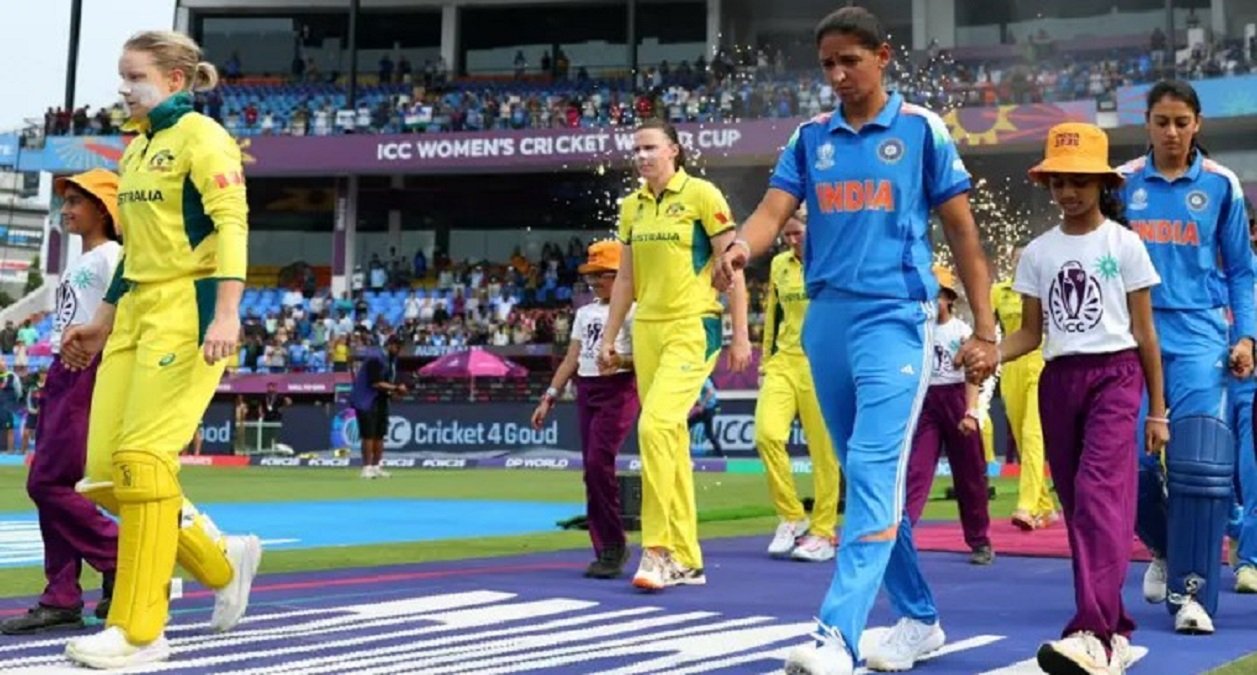
Contents
Mumbai, Oct.30,2025:India vs Australia Women’s World Cup Semi-Final 2025 is upon us, and the stage couldn’t be bigger. At the Dr DY Patil Sports Academy in Navi Mumbai, India and Australia face off in the second semi-final of the ICC Women’s Cricket World Cup 2025 on Thursday, October 30-
Australia’s captain Alyssa Healy won the toss and elected to bat first, setting the tone for what could be a high-stakes, high-drama encounter.
With Australia topping the group stage undefeated, and India carving their path into the semis, this clash is loaded with storylines, pressure and potential turning points.
Understanding the Toss Moment and What It Means
Why the Toss Choice Matters
In this India vs Australia Women’s World Cup Semi-Final 2025, the toss is more than a ritual—it’s strategic warfare. Australia chose to bat first after winning the toss, signalling confidence in posting a big total and putting India under pressure.
The pitch at DY Patil is expected to reward batting but with some lateral movement earlier on. According to pitch report commentary: “The overcast conditions will allow the ball to swing … but lots of runs can be expected.”
Hence, batting first may offer Australia the chance to dominate while India will evaluate whether chasing is feasible under pressure, or if they’d rather bat first and set a target.
Pitch Report and Weather Threats
Overcast skies hovered above the stadium before the match, and there is a rain-related caveat: if the match is washed out, a reserve day applies—but if even that fails to produce a result, tournament rules stipulate that the team that finished higher in the group stage advances. In this case, that team is Australia.
Thus, the toss decision by Australia to bat first also gives them a slight insurance policy: advance by virtue of ranking if weather intervenes.
Teams, Form & Head-to-Head in India vs Australia Women’s World Cup Semi-Final 2025
Australia’s Unbeaten Run
Australia enter this India vs Australia Women’s World Cup Semi-Final 2025 as firm favourites. They topped the table in the group stage with 13 points from 7 matches, remaining unbeaten.
Their momentum includes a landmark performance by leg-spinner Alana King who took 7 wickets for 18 runs in a group stage match. That spell highlighted Australia’s depth and destructive potential.
India’s Road to the Semi-Final
India made it to the semis after a gritty campaign, finishing on 7 points. Their triumph over New Zealand secured their last-four berth.
While they may not have matched Australia’s consistency, India bring the home advantage, crowd energy, and the hunger to upset the favourites.
The head-to-head record heavily favours Australia, which adds weight to narrative: India are up against it, but nothing is impossible.
Key Players to Watch in the India vs Australia Women’s World Cup Semi-Final 2025
Australia’s Game Changers
- Alyssa Healy (captain & wicketkeeper) – provided leadership and depth at the top of the order.
- Alana King – her 7/18 spell shows she can turn the match with the ball.
- Ashleigh Gardner, Ellyse Perry – experienced campaigners who thrive in big matches.
India’s Game Changers
- Smriti Mandhana – a consistent run-getter, she will aim to set the tone.
- Shafali Verma – though younger, she has fearless batting style and returned into the squad.
- Harmanpreet Kaur (captain) – leadership under pressure is key, especially in knockout cricket.
Each player’s performance can tilt the balance in this India vs Australia Women’s World Cup Semi-Final 2025.
What Happens If the Match Is Washed Out
One of the most crucial loose ends in this India vs Australia Women’s World Cup Semi-Final 2025 is: if the match cannot produce a result due to rain or other factors, the team that finished higher in the group stage advances to the final. Australia topped the group, so they would advance in that scenario.
For India, this adds urgency: they must aim to win outright. Playing for a wash-out advancement isn’t an option. For Australia, it offers a slight cushion: they still must play to win, but the situation gives them some breathing space.
aStakes, Emotions & What to Expect in India vs Australia Women’s World Cup Semi-Final 2025
The India vs Australia Women’s World Cup Semi-Final 2025 is more than a match—it’s a crossroads of momentum, legacy and pressure. Australia seek to maintain dominance and book their place in the final. India aim to harness home crowd energy, defy the odds and make a statement.
Expect an intense contest: strategic bowling changes, bold batting moves, cautious start to the chase, and maybe a moment of brilliance that shifts everything. The toss decision to bat first by Australia underlines their intention to seize control early. India must respond by staying composed, executing their plans and grabbing early momentum.
Breaking News
Women’s World Cup India vs Australia semi-final brings an epic clash of giants as hosts India face an unbeaten Australia-
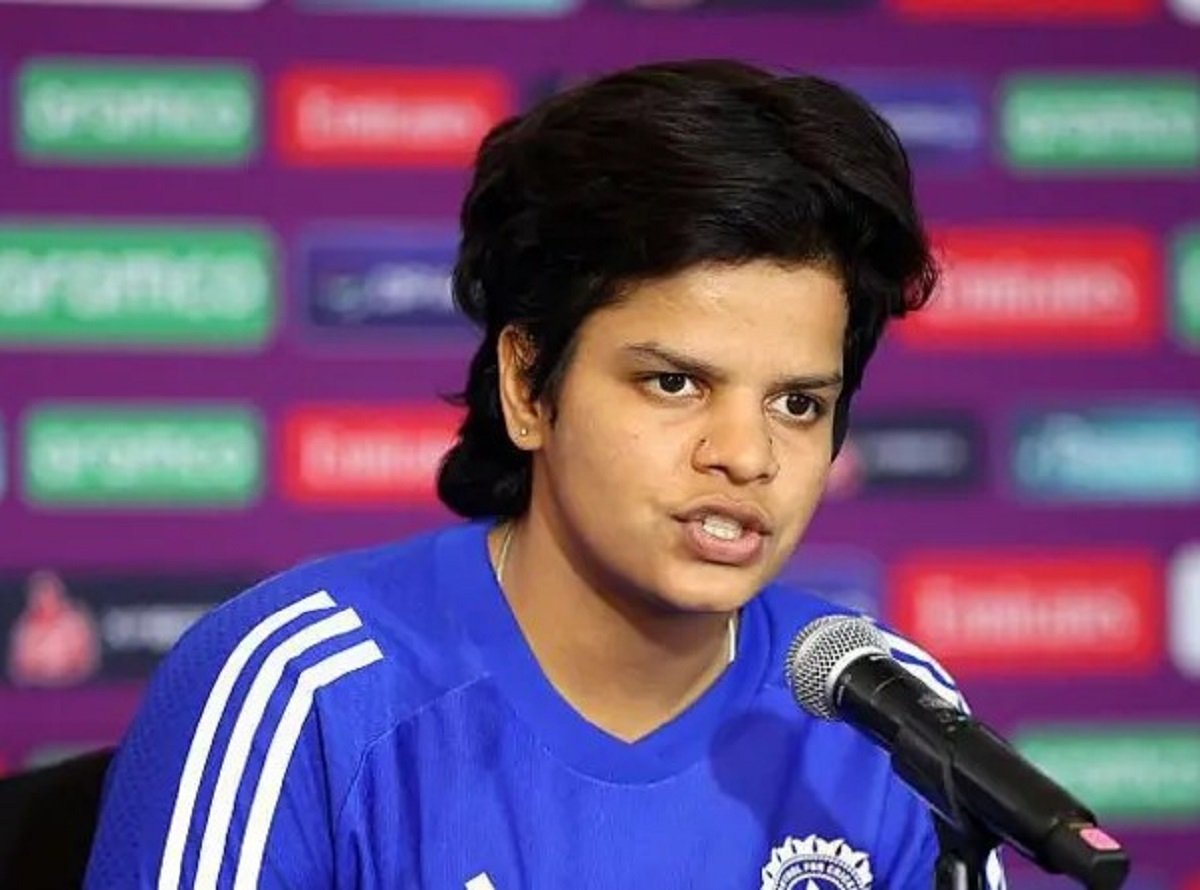
Contents
India, Oct.30,2025:The Women’s World Cup India vs Australia semi-final will be played at Dr D.Y. Patil Stadium in Navi Mumbai on Thursday, October 30, 2025-
Australia have already booked their spot, dispatching competitors with authority. India, meanwhile, made a dramatic run to reach this stage. The stakes couldn’t be higher: the winner heads to the final, while the loser’s world-cup hopes end.
From rocky start to semi-final berth
Tremulous beginning
India’s campaign had its rough patches. Three successive defeats in the group stage left them scrambling.
Their defeat to Australia earlier (by 3 wickets in Visakhapatnam) again showed the challenge ahead.
The turnaround
But India struck back. A dominant 53-run victory over New Zealand in a rain-reduced match sealed their semi-final berth.
That win featured centurions at the top of the order and finally showed India realising their potential at home.
Momentum and belief
India now arrive with momentum and home crowd support. They understand the occasion. Former captain Mithali Raj stressed the mental aspect:
“It’s not just physical skills, but mental strength and awareness that will make the big difference.”
Their captain and senior players have repeatedly emphasised staying calm, focusing on one match at a time, and playing to win rather than to avoid defeat.
Australia’s dominance
Australia come into this semi-final as the team to beat. They’ve built a formidable record and are defending champions.
Unbeaten run and confidence
Australia remain unbeaten in this Women’s World Cup edition. Their consistency across facets – bat, ball, field – has elevated them.
Devastating spells and depth
One standout moment: Alana King’s 7-wicket haul (7/18) that dismantled South Africa and booked Australia’s semi-final place.
Such performances reinforce Australia’s depth and their ability to dominate even when under pressure.
The head-to-head advantage
Historically, Australia dominate India in women’s ODIs: India have only 11 wins compared to Australia’s 48 in their 59 or so meetings. That weight of history adds to the aura of the Australian side.
Key players and narratives to watch
India’s frontline batters & bowlers
- Smriti Mandhana has been in top form, leading India’s run-scoring and firing in crucial moments.
- Young players such as Shafali Verma (who has now been drafted in) bring explosive potential.
- On the bowling front, India will lean on spin options and home-advantage conditions.
Australia’s match-winners
- Alyssa Healy and other senior Australian batters remain threats to any bowling attack.
- Alana King’s leg-spin continues to trouble batters unfamiliar with her variations.
- Australia’s fielding standards, clarity of roles and experience in big matches remain big advantages.
The replacement story
India have had a late change: Pratika Rawal has been ruled out ahead of this semi-final due to knee/ankle injury. Her absence will force India to adjust the top-order and may impact their momentum.

The injury blow and selection intrigue
With Pratika Rawal out, India’s balance shifts. Losing a centurion and in-form opener so close to the semi-final is a blow. India will need to recalibrate their batting order and their mental resolve.
Meanwhile, Australia might view this as an opportunity to press home their advantage, but as they’ve stated themselves:
“This will be an even contest. We’re not here as underdogs or favourites.” — Australian Head Coach Shelley Nishikawa
The selection and mental preparedness of both teams will be under the spotlight.
Weather, rules and match-day wildcards
Rain threat and reserve day
The match is at Dr D.Y. Patil Stadium, Navi Mumbai, and weather-watchers are eyeing the skies. A 25% chance of rain has been reported.
If the match is washed out, tournament rules may advance Australia to the final because they finished higher in the group stage.
Match timing and conditions
It’s a day-night affair, with the start time set for 15:00 local. There may be changes due to weather.
Home advantage, but also pressure
Playing at home helps India with fan support and familiar conditions. But it also adds pressure: expectations soar, nerves may tighten. Australia, conversely, come in with less expectation and more of a legacy to live up to.
What this semi-final means for both teams
For India
A win would be historic: reaching the final and potentially fulfilling the long-held dream of a first Women’s World Cup title. It would validate the progress they’ve made, especially in home conditions.
But a loss? It means evaluation, regrouping and facing the reality that despite home advantage, the top hurdle still may be Australia.
For Australia
A win would reinforce their dominance, add another final appearance and perhaps another title. It would show their dominance was no accident.
However, a loss? That would be seismic — it would open the door for India and shift the power balance in women’s cricket.
The Women’s World Cup India vs Australia semi-final isn’t just a game. It’s a litmus test of growth, dominance, pressure, legacy and ambition. India want to prove they belong here. Australia want to show they dominate.
Whichever way this goes, one thing is clear: we are in for a match that will be talked about for years. Youngsters will look back at this as a turning point — for India’s rise or for Australia’s sustained reign.
Breaking News
India-Australia 3rd ODI saw a dominant comeback win, 33rd ODI century, 75th half-century and record partnerships —
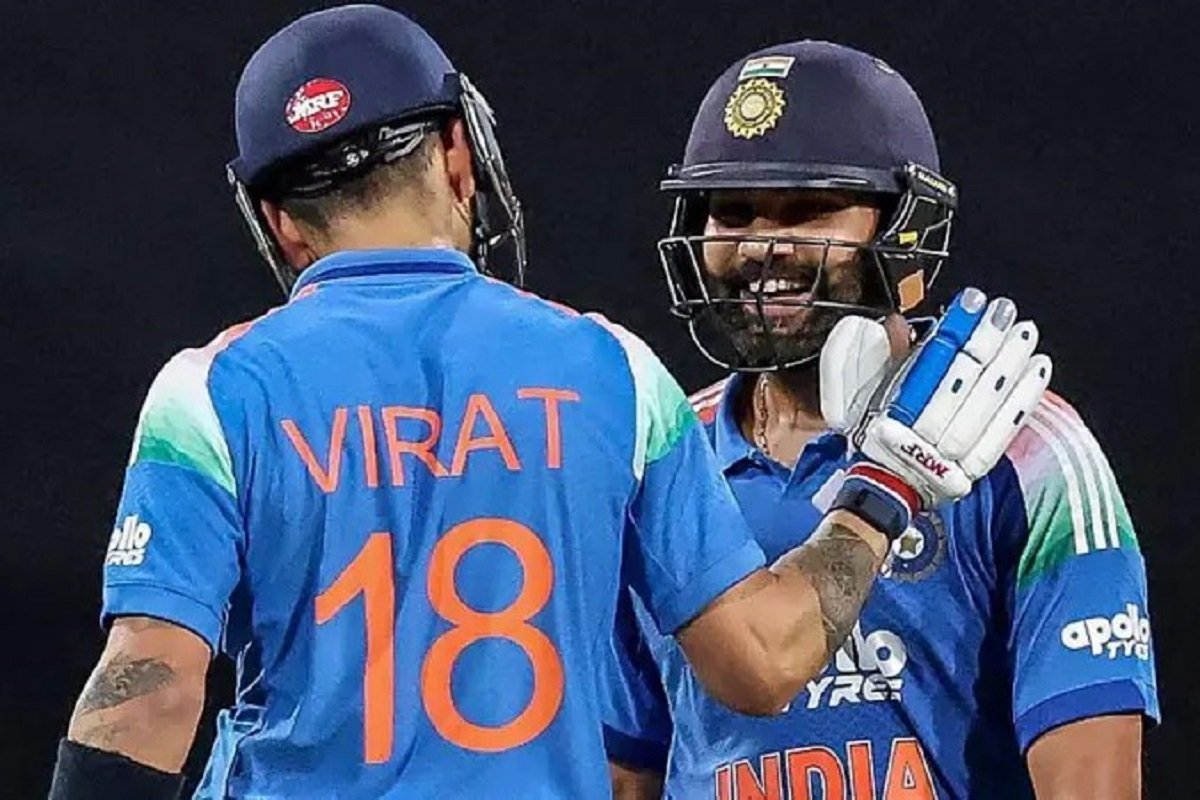
Contents
Australia, Oct.25,2025:India Australia 3rd ODI began with a message- despite the series having already been lost, the Indian side entered the contest with purpose and flair. The match took place at the Sydney Cricket Ground, where Australia batted first and were bundled out for 236 in 46.4 overs-
In reply, India’s chase was nothing short of dominant, finishing at 237/1 in just 38.3 overs.
From the opening ball to the final run, this contest was defined by discipline, class and aggression. The focus keyword India Australia 3rd ODI appears throughout because this was not just another match — it became a milestone-laden affair.
Record Milestone
In the India Australia 3rd ODI, one of the standout performances came from Rohit Sharma, who smashed an unbeaten 121 off 125 balls. This innings was not only spectacular in execution but historic in its meaning: it marked his 33rd ODI century.
What makes this achievement even more significant is that it helped him equal a major legend, and break new ground. In doing so, Rohit signalled that even in the twilight of his career, he remains a batting force.
He paced his innings beautifully — mixing controlled drives and aerial strokes. The result: Australia’s bowling attack never really had a chance once he got set. The India Australia 3rd ODI thus becomes a case study in veteran excellence meeting big-stage opportunity.
The Historic Half-Century
While Rohit’s century grabbed headlines, the other veteran of the Indian batting order, Virat Kohli, delivered a masterclass of his own in the India Australia 3rd ODI. He scored an unbeaten 74 off 81 balls, marking his 75th ODI half-century.
More importantly, this knock elevated Kohli to become the second-highest run-scorer in ODI history, surpassing Kumar Sangakkara. That context transforms this performance from just another fifty to a landmark moment in his storied career.
In the India Australia 3rd ODI, the milestone underscores the value of consistency and resilience over the long haul — especially when conditions and opposition stack up against you.
The Crushing Partnership
In one of the most memorable aspects of the India Australia 3rd ODI, Rohit and Kohli forged an unbeaten partnership of 168 runs for the second wicket. This stand crushed Australia’s hopes of a comeback and turned the chase into a smooth march rather than a tense pursuit.
Partnerships of this scale between senior players, under pressure on foreign soil, are rare. They combine technical mastery with the right temperament. And in the India Australia 3rd ODI, this pairing did more than just chase: they sent a message that experience still matters.
Bowling Fireworks That Set the Tone
While the batting stole the spotlight in the India Australia 3rd ODI, the bowling performance laid the foundation. Australia, batting first, were restricted to 236 in 46.4 overs — a result of disciplined Indian bowling.
Indian pacer Harshit Rana delivered a standout spell of 4 wickets for 39 runs, which proved crucial in dismantling the Australian lower order. Spinners too chipped in, ensuring the home side never regained momentum.
In the India Australia 3rd ODI context, this blend of seam and spin underlines that even batting-friendly or flattening conditions can be exploited when discipline and plans align.
The Emotional Farewell Context
Beyond records and stats, the India Australia 3rd ODI carried an emotional weight. Both Rohit Sharma and Virat Kohli hinted at this being their final outing in Australia for India. In that sense, their performances doubled as a message of gratitude, legacy, and celebration.
When players of their calibre deliver under those conditions — away from home, in a full stadium, with crowd support divided, and under milestone pressure — it elevates a match into an event. The India Australia 3rd ODI thus becomes more than a win: it becomes a symbolic moment in Indian cricket.
What It Means for the Series & Beyond
Although India lost the series 2–1 (after losses in the first two ODIs), securing the India Australia 3rd ODI win injects confidence into the side. The ability to bounce back, especially with key senior players delivering, matters for morale and future tours.
In terms of ODI cricket’s landscape-
- Rohit Sharma’s 33rd century adds to his legacy and raises expectations of how he’ll finish his career.
- Virat Kohli’s 75th fifty and second-highest run tally in ODIs reaffirm his greatness and longevity.
- Young players in the squad witness live how experience and preparation matter.
- A blueprint: strong bowling first, then measured batting under pressure — a model for future contests.
For the upcoming T20 series (India vs Australia), this match will resonate as a reminder that form and confidence don’t simply transfer format-to-format, but momentum helps.
Key Takeaways for Fans and Cricket Lovers
- In the India Australia 3rd ODI, senior players delivered when it counted — proving age is not always a limiter.
- Partnerships matter: the 168-run stand between Rohit & Kohli became the backbone of the chase.
- Bowls win matches: the early bowling effort created the platform for a dominant batting display.
- Milestones add flavour: 33rd century, 75th half-century, second-highest runs in ODIs — all elevate the match from routine to historic.
- Emotion counts: whether it is a farewell hint or a legacy moment — when context aligns, it enhances intensity.
- For aspiring cricketers: preparation, adaptability, pressure-handling and temperament shine through.
- For fans: this was a reminder that cricket is as much about stories and eras as it is about runs and wickets.
Breaking News
India vs Pakistan Asia Cup Final- PM Modi Calls Victory ‘Operation Sindoor’ –
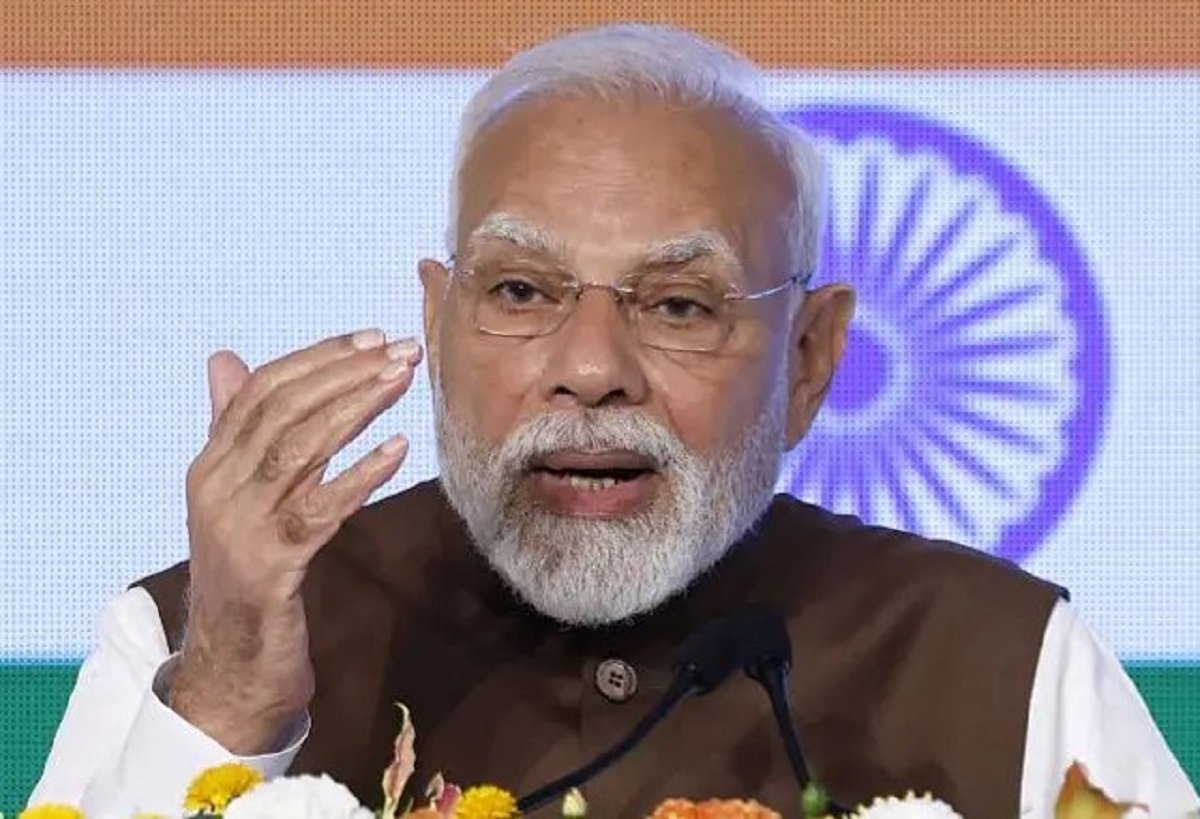
Contents
New Delhi, Sep.29,2025:The India vs Pakistan Asia Cup Final has always been more than just cricket. The 2025 edition, played in Dubai, added another golden chapter to this legendary rivalry. India defeated Pakistan by 5 wickets to claim their 9th Asia Cup title, but it was Prime Minister Narendra Modi’s statement that grabbed headlines-
He compared the victory to “Operation Sindoor”, a past military operation against Pakistan, symbolizing how India emerged victorious both on the battlefield and on the cricket pitch.
This blend of sports, politics, and national pride has sparked debates, celebrations, and emotional reactions across both nations.
PM Modi’s Bold Statement “Operation Sindoor on the Cricket Field”
Prime Minister Narendra Modi took to X (formerly Twitter) to celebrate the win. He wrote:
“खेल के मैदान में ऑपरेशन सिंदूर. नतीजा वही, भारत की जीत. हमारे खिलाड़ियों को बधाई.”
(Translation: “Operation Sindoor on the cricket field. The result remains the same – India’s victory. Congratulations to our players.”)
His post quickly went viral, trending across India and Pakistan, making the India vs Pakistan Asia Cup Final not just a sporting event but a political talking point.
How India Outplayed Pakistan
The match lived up to the hype. Pakistan, batting first, struggled against India’s disciplined bowling attack and were restricted to 146 runs in 19.1 overs.
- Kuldeep Yadav was the star with the ball, taking 4 wickets and breaking Pakistan’s backbone.
- India chased the target of 147 with 2 balls to spare, finishing at 147/5 in 19.4 overs.
Despite losing early wickets, India’s middle order held strong, led by a sensational knock from Tilak Varma.
Tilak Varma, Shivam Dube, and Kuldeep Yadav
- Tilak Varma: The 22-year-old left-hander played a mature innings of 69 not out from 53 balls, guiding India home.
- Shivam Dube: Contributed a quick 33 runs, adding stability in the middle order.
- Kuldeep Yadav: His 4 for 27 dismantled Pakistan’s hopes early on.
Their performances not only sealed the match but also highlighted India’s emerging young talent, setting the tone for future dominance.
Weak Middle Order and Tactical Errors
Pakistan once again failed to handle pressure in the India vs Pakistan Asia Cup Final. Despite a decent start, their middle order collapsed, showing lack of planning and adaptability.
- Poor shot selection
- No effective partnerships
- Weak captaincy decisions
These issues mirror Pakistan’s long-standing struggles in high-stakes matches against India.
Amit Shah’s Reaction “India’s Victory is Certain Anywhere”
Home Minister Amit Shah also joined the celebrations. On X, he wrote.
“Shandaar jeet! Our players’ energy once again demolished the opposition. India’s victory is certain, no matter the ground.”
This reflected the government’s confidence in India’s cricketing supremacy over Pakistan, echoing the symbolic power of Modi’s “Operation Sindoor” remark.
Symbolism of Operation Sindoor- From Battlefield to Cricket Ground
Operation Sindoor was a military action by India against Pakistan after the Pahalgam terror attack. By using this phrase, PM Modi drew a direct parallel between India’s military strength and its cricketing dominance.
The symbolism resonated with fans, blending national security pride with sports glory, though it also stirred controversy in Pakistan.
Fan Reactions Across India and Pakistan
- In India: Streets, cafes, and social media platforms exploded with joy. Fans hailed Tilak Varma as the new match-winner.
- In Pakistan: Disappointment dominated discussions, with fans blaming poor strategy and captaincy.
Interestingly, some Pakistani fans admired India’s resilience, calling the victory “well-deserved.”
What Analysts and Former Players Said
- Sunil Gavaskar praised India’s new generation for handling pressure.
- Rameez Raja criticized Pakistan’s inability to finish strong despite good starts.
- Shoaib Akhtar highlighted poor captaincy and lack of tactical awareness.
Their insights underline how India vs Pakistan Asia Cup Final matches always redefine cricketing narratives in Asia.
A Look at Past Titles
With this win, India extended its record to 9 Asia Cup titles, far ahead of its rivals.Year Winner Runner-Up Venue 1984 India Sri Lanka UAE 1990 India Sri Lanka India 1995 India Sri Lanka UAE 2010 India Sri Lanka Sri Lanka 2016 India Bangladesh Bangladesh 2018 India Bangladesh UAE 2023 India Sri Lanka Sri Lanka 2025 India Pakistan Dubai
This consistent success shows why India remains Asia’s cricketing powerhouse.
Why India vs Pakistan Asia Cup Final Matters Beyond Cricket
The India vs Pakistan Asia Cup Final of 2025 was more than just a sporting event. It became a reflection of national pride, political symbolism, and cricketing excellence.
PM Modi’s “Operation Sindoor” remark ensured the match will be remembered not only for Tilak Varma’s heroics but also for its cultural and political impact.
Breaking News
Asia Cup Final 2025 Controversy has sparked outrage among former Pakistan cricketers who criticized batting, captaincy, and India’s refusal to accept the trophy-
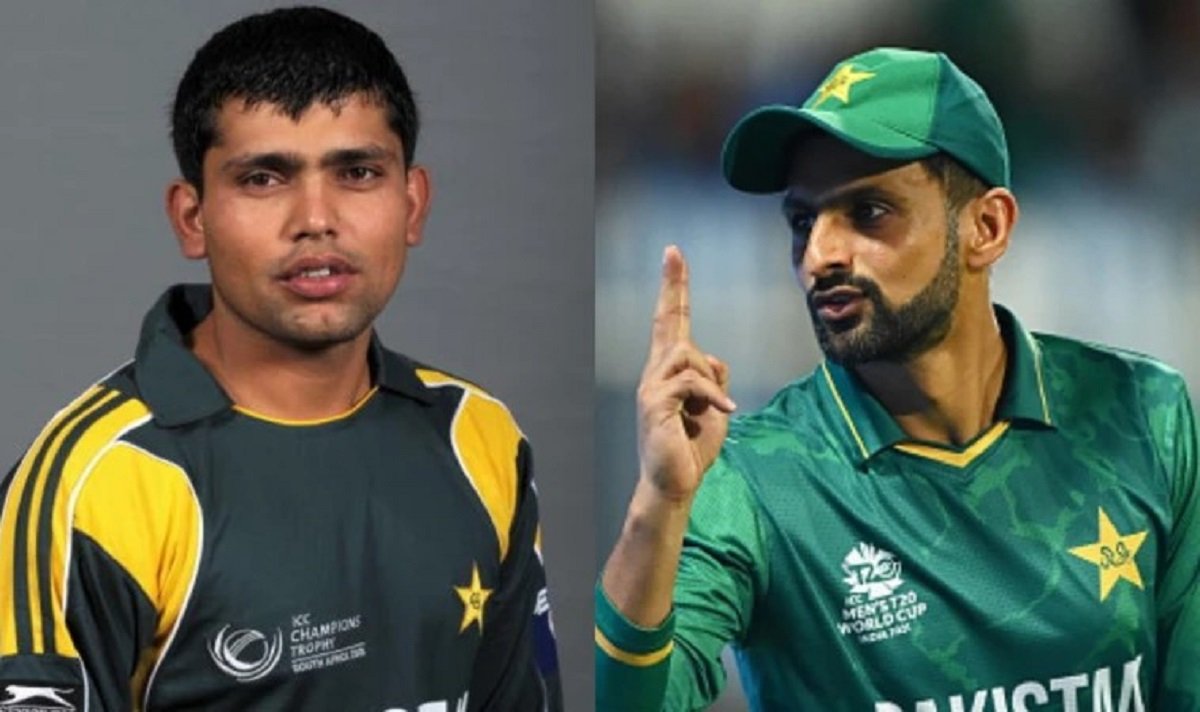
UAE, Sep.29,2025:The Asia Cup Final 2025 Controversy has dominated cricket discussions after India defeated Pakistan in a thrilling match in Dubai. While India celebrated a five-wicket win to secure the championship, the post-match events involving the trophy presentation overshadowed the cricketing brilliance on display-
Former Pakistan cricketers, including Kamran Akmal, Shoaib Malik, Shoaib Akhtar, and Ramiz Raja, have voiced strong criticism of both Pakistan’s performance and India’s refusal to accept the trophy from Mohsin Naqvi, Pakistan’s Home Minister and ACC President.
India’s Victory and the Trophy Refusal That Sparked Debate
India chased down 147 runs in 19.4 overs, thanks to a stellar 69 not out by Tilak Varma and 33 runs by Shivam Dube. Despite this emphatic win, the moment turned controversial when Team India refused to accept the trophy.
According to BCCI officials, the decision was taken collectively by the players in advance, citing political sensitivities. But for Pakistani cricketers and fans, the refusal felt like an insult to the spirit of the game.
Kamran Akmal Slams Batting Failures
Former wicketkeeper Kamran Akmal did not hold back. He called Pakistan’s batting the biggest weakness of the tournament.
“You don’t become a good team by chanting modern cricket slogans. Preparation and selection matter. Batting struggled throughout the Asia Cup. Constant experiments with the batting order hurt us badly,” Akmal said on The Game Plan YouTube channel.
He urged the management to play players in their natural positions instead of unnecessary experiments, warning that otherwise Pakistan would continue to collapse against stronger teams.
Shoaib Malik Points Out Lack of Awareness
Ex-captain Shoaib Malik criticized the team’s lack of game awareness. Speaking on Tapmad, Malik highlighted that both batting and bowling strategies failed.
“When three wickets had fallen, Pakistan needed to change gears. Instead, they repeated mistakes. Game awareness was zero. In-form batsmen should have been sent up the order,” Malik said.
He emphasized that conditions were misread, and Pakistan failed to adapt with either batting or field placements.
Shoaib Akhtar Blames Management and Captaincy
Former speedster Shoaib Akhtar was even more direct, pointing fingers at the team management and captaincy.
“This is not just about players. It’s poor decision-making by management. I call it senseless coaching. We needed 175 runs; 147 was never enough against India,” Akhtar said on Tapmad.
He further criticized bowling changes, questioning why pacer Haris Rauf was introduced when spin wasn’t working, instead of exploring alternatives.
Ramiz Raja Questions Pakistan’s Mental Strength
Former PCB Chairman Ramiz Raja acknowledged that Pakistan had India under pressure in the powerplay, but the team failed to capitalize.
“Once again, Pakistan handed over a winning game to India. Mental toughness is lacking. Bowlers like Kuldeep Yadav and Jasprit Bumrah showed how to fight back, but Pakistan doesn’t have such resilience,” Ramiz said on his YouTube channel.
Ramiz concluded that India’s technique, mental strength, and adaptability were far superior in this tournament.
Reactions on India’s Trophy Decision
The trophy controversy turned out to be the biggest headline.
- Kamran Akmal: “Not accepting the trophy goes against the spirit of cricket. If you had issues, raise them in meetings, not on the ground.”
- Pakistan captain Salman Agha: “Refusing the trophy was an insult to cricket itself.”
BCCI Secretary Devajit Saikia clarified that the refusal was a collective decision by the players, supported by captain Suryakumar Yadav.
Fans in Islamabad Express Anger and Hope
In Islamabad, fans gathered at parks, restaurants, and homes to watch the high-voltage clash. Their reactions were mixed:
- Some praised Pakistan’s early bowling.
- Many criticized the middle-order collapse.
- Several felt captaincy errors cost the game.
Yet, fans expressed hope that the team would learn from mistakes and return stronger.
India vs Pakistan Rivalry
The India-Pakistan rivalry has always been more than just cricket. With trophy refusals, heated statements, and back-to-back matches, this rivalry often transcends sports, fuelling political and emotional narratives on both sides.
The Asia Cup Final 2025 Controversy only added another layer to this storied rivalry, making it one of the most talked-about sporting events of the year.
Lessons from Asia Cup Final 2025 Controversy
The Asia Cup Final 2025 Controversy will be remembered not only for India’s brilliant win but also for the heated aftermath. Former cricketers from Pakistan have raised valid concerns about batting failures, leadership flaws, and lack of awareness.
At the same time, the trophy refusal by India has sparked a debate on sportsmanship vs politics in cricket.
Breaking News
Abhishek Sharma’s explosive 75 runs secured India’s spot in the Asia Cup 2025 Final- Will India face Pakistan or Bangladesh next-
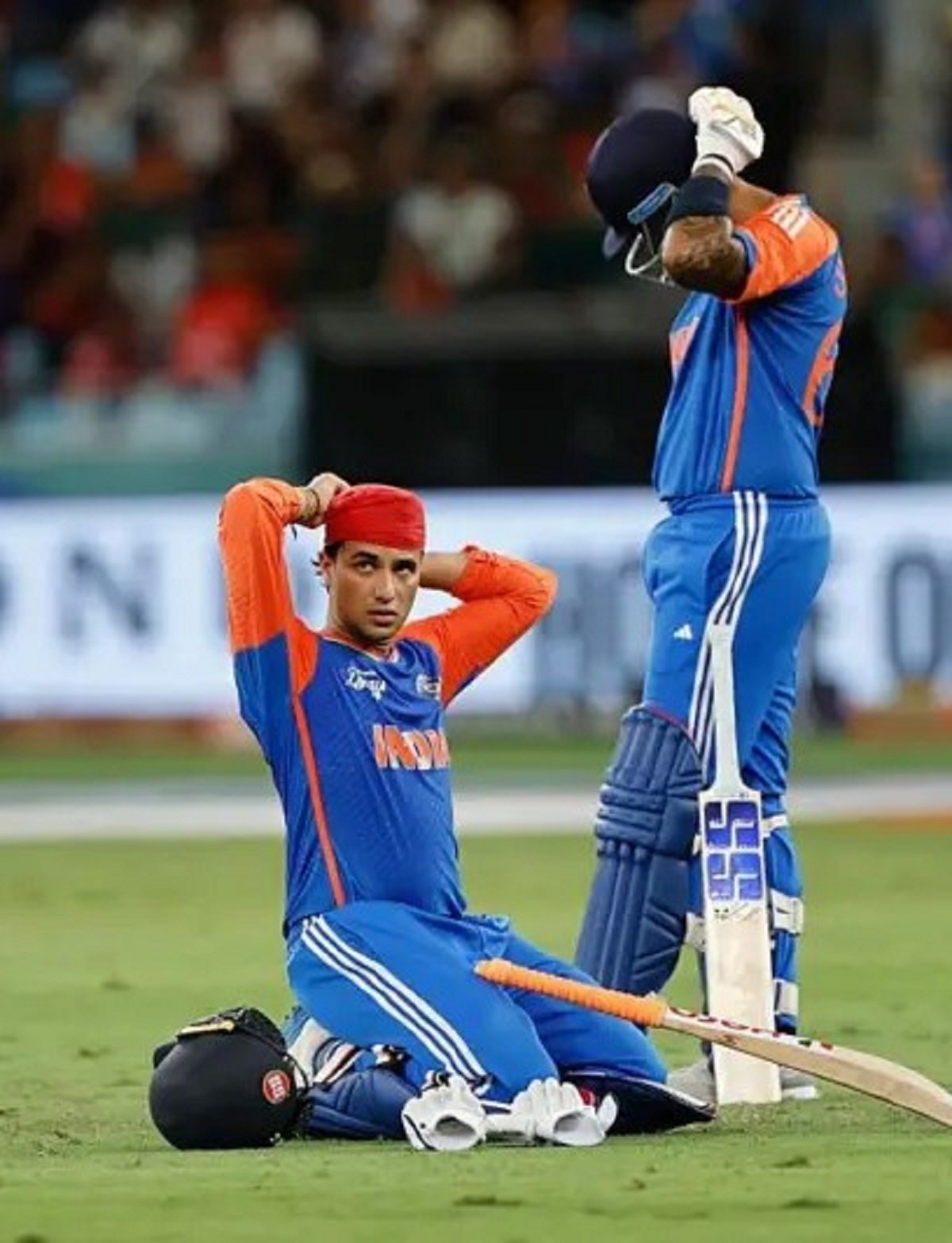
Contents
UAE,Sep.25,2025:When India walked out to bat in their crucial Super-4 encounter against Bangladesh, all eyes were on young opener Abhishek Sharma. Having already impressed with a 74-run knock against Pakistan earlier, Abhishek once again produced a blistering innings-
His 75 runs from just 37 deliveries, studded with 5 towering sixes, gave India the perfect platform. Abhishek’s fearless intent against the new ball left Bangladesh reeling. Interestingly, he could have been dismissed early on when Zaker Ali dropped his catch at just 7 runs — a mistake that proved costly.
This innings also made him the leading run-scorer of the tournament, with 248 runs so far, ahead of stars from Pakistan, Sri Lanka, and Bangladesh.
Virender Sehwag Recalls Sunil Gavaskar’s Golden Advice
Cricketing greats were quick to hail Abhishek’s performance. Former India opener Virender Sehwag revealed that Sunil Gavaskar once told him:
“When you reach 70 or 80, never miss the hundred.”
While Abhishek once again fell short of a century, his back-to-back match-winning knocks are turning him into India’s biggest T20 asset. His family too expressed pride, with his sister Komal saying she believes a century is just around the corner. His mother, Manju Sharma, echoed the same sentiment, stating-
“He missed a hundred again, but the way he is batting, I am confident he will score one very soon.”
India’s Batting Journey- Explosive Start, Middle-Order Struggles
Opening alongside Shubman Gill, Abhishek Sharma stitched a blistering 77-run partnership in just 6.1 overs. Gill contributed 29 runs, while Abhishek dominated with boundaries all over the ground.
However, once Abhishek departed in the 12th over, India’s scoring rate slowed down dramatically. Over the next eight overs, the team could manage only 56 runs, as Bangladesh spinners tightened their grip.
It was Hardik Pandya’s cameo of 38 runs from 29 balls that pushed India to a respectable 168 runs — a total that eventually proved more than enough.
The Six Heroes of India’s Victory
India’s win wasn’t just about Abhishek Sharma’s 75 runs. Six heroes defined the match:
- Abhishek Sharma – 75 runs
- Shubman Gill – 29 runs
- Hardik Pandya – 38 runs
- Kuldeep Yadav – 3 wickets
- Jasprit Bumrah – 2 wickets
- Varun Chakravarthy – 2 wickets
Together, they ensured India’s dominance both with bat and ball.
Bangladesh’s Fight and Collapse
Chasing 169, Bangladesh faltered early but opener Saif Hassan kept hopes alive with a gritty 69 runs off 51 balls. Unfortunately, no other batter supported him, as the team collapsed to just 127 runs.
Kuldeep Yadav’s magical spell broke the backbone of Bangladesh’s middle order, while Bumrah and Varun sealed the win. Despite dropping as many as five catches, India’s bowling proved too strong.
Abhishek Sharma’s Record-Breaking Form in Asia Cup 2025
Abhishek’s 75 runs added to an already stellar tournament. Here are some of his standout records-
- Most runs in Asia Cup 2025 so far – 248 runs
- Fastest to 500 T20I runs in 2025 for India
- Highest strike rate among Indian openers – over 201 in 19 matches
- 58 sixes since July 2024 – most by any ICC full-member batsman
His consistency has sparked comparisons with Chris Gayle, Brendon McCullum, Travis Head, and mentor Yuvraj Singh.
Comparisons With T20 Legends and Mentors
Former cricketers have been quick to notice Abhishek’s fearless hitting. Irfan Pathan tweeted:
“Abhishek Sharma is currently the most dangerous T20 opener in world cricket.”
The left-hander’s ability to clear boundaries at will reminds fans of Yuvraj Singh, who has also mentored him closely. This mentorship seems to be paying off, with Abhishek evolving into India’s next T20 superstar.
Pakistan or Bangladesh in the Final
India’s spot in the Asia Cup 2025 Final is secured, but the big question is: who will they face?
- If Pakistan beats Bangladesh, cricket lovers could witness yet another high-voltage India vs Pakistan clash.
- If Bangladesh wins, it will be a chance for them to avenge their defeat in the Super-4 stage.
Regardless of the opponent, India enters the final as favorites, riding on their dominant form.
India vs Pakistan- The Rivalry Everyone Awaits
Should Pakistan qualify, it would mark the third India vs Pakistan clash in this tournament. India has already beaten Pakistan twice — once in the group stage and once in the Super-4 round.
Historically, India dominates this rivalry in T20Is, winning 12 out of 15 encounters. Pakistan, however, is desperate to turn the tables, making a potential final a blockbuster.
Fans around the world, from Dubai to Delhi, will be glued to their screens if the arch-rivals meet again.
The Asia Cup 2025 Super-4 clash against Bangladesh showcased India’s depth and dominance, but above all, it was Abhishek Sharma’s 75 runs that lit up the night. His consistency, fearless hitting, and record-breaking form make him India’s biggest hope heading into the final.
Breaking News
Shoaib Akhtar criticism, Pakistan vs India Asia Cup 2025-
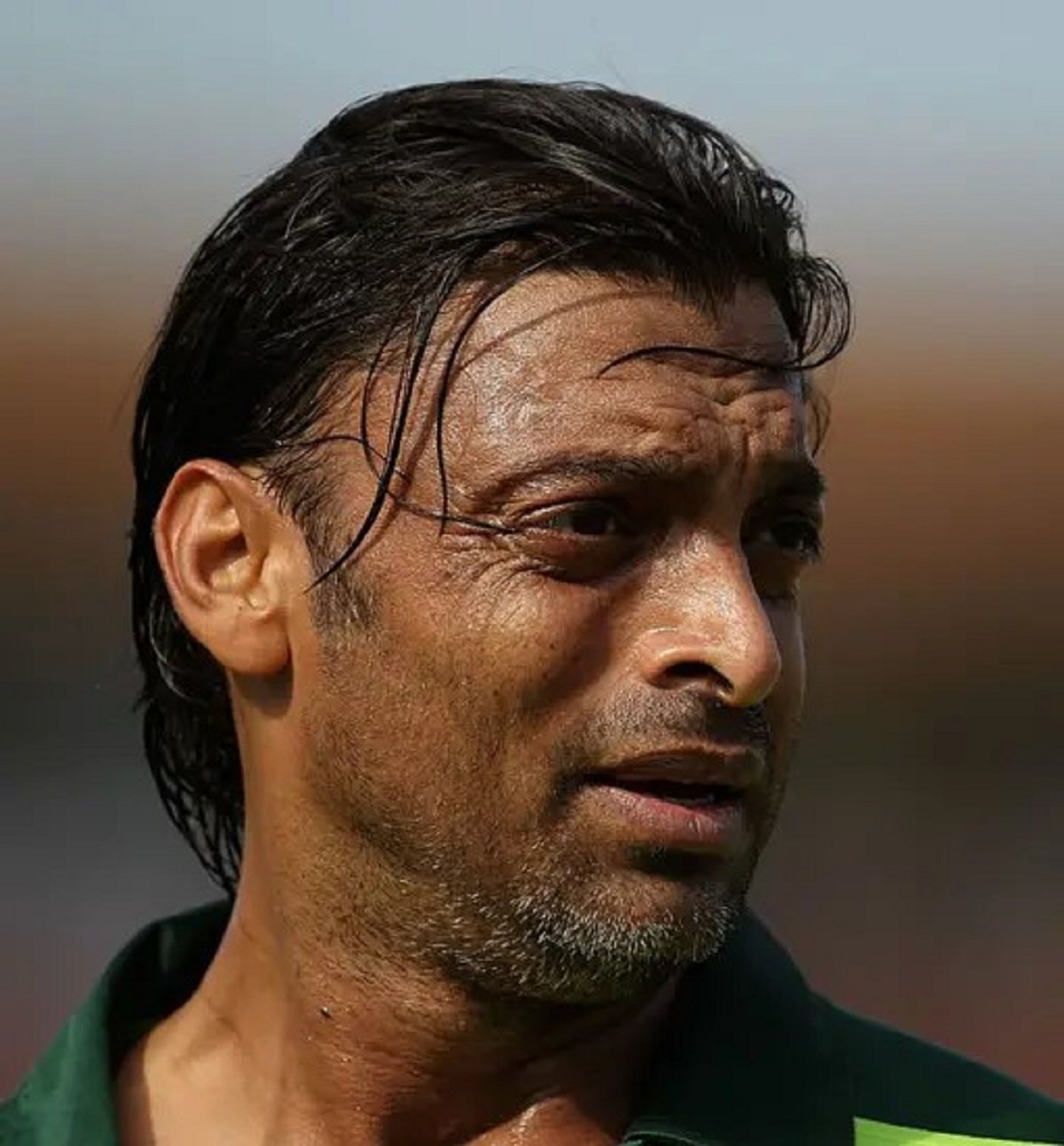
Contents
Sep.22,2025:The Shoaib Akhtar criticism following Pakistan’s defeat to India in the Asia Cup 2025 Super-4 clash has once again highlighted deep cracks in Pakistan cricket. Known for his blunt and fearless analysis, the former fast bowler did not hold back-
Speaking on Tapmad’s post-match program, Akhtar openly slammed the team selection, captaincy, and coaching staff, raising a series of tough questions that have now gone viral across cricketing circles.
Pakistan vs India Asia Cup 2025 Match Recap
On Sunday, Pakistan suffered yet another defeat against arch-rivals India. Batting first, Pakistan managed only 172 runs, a below-par total considering the conditions. India chased down the target in the 19th over, securing a comfortable win.
The result not only dented Pakistan’s campaign but also reignited discussions about the team’s strategy and mindset.
Shoaib Akhtar Criticism on Team Selection
According to Akhtar, Pakistan made fundamental mistakes in selecting their playing XI.
“Pakistan selected the wrong team. We were warning against it, but they did exactly what they shouldn’t have. This shows poor management and poor talent selection,” Akhtar said.
He highlighted that the chosen lineup did not reflect the best talent available, raising doubts about the selection process itself.
Questioning Pakistan’s Bowling Strategy
Akhtar, nicknamed the “Rawalpindi Express,” saved some of his sharpest criticism for the bowlers.
He questioned whether the selectors had any clear strategy for bowling combinations.
“What were they even thinking? What process are they following in selecting bowlers?” he asked.
This echoes a long-standing concern that Pakistan, traditionally known for producing world-class fast bowlers, is failing to utilize its pace talent effectively.
Concerns Over Captaincy and Leadership
One of the boldest aspects of Shoaib Akhtar criticism was directed at the captain.
“The captain doesn’t even know what he is doing in the middle. What kind of captaincy is this? What is he playing himself?”
Akhtar further questioned whether the current captain truly deserves his place in the XI, especially given his inconsistent performances and questionable batting positions.
He pointed at Salman Agha’s role, asking why he bats at No. 6 and what contribution he brings in crucial moments.
Shoaib Akhtar on Coaching and Management Failures
Another strong point of Shoaib Akhtar criticism was Pakistan’s coaching setup.
He said he was “shocked” at the role of the coach, questioning the lack of tactical awareness and strategic planning.
This raises concerns over whether Pakistan’s management is aligned with modern cricketing standards or stuck in outdated methods.
Did Pakistan Select the Wrong XI
The biggest headline from Akhtar’s comments was his repeated allegation that Pakistan picked the wrong XI.
He argued that players who were better suited for Indian conditions and pressure situations were ignored, while non-performing individuals continued to get chances.
This pattern of questionable selections has haunted Pakistan cricket for years.
Reactions from Fans and Analysts
The Shoaib Akhtar criticism resonated with fans, who flooded social media with support for his views. Many agreed that Pakistan’s decision-making in crucial games lacks logic.
Cricket analysts also debated whether Akhtar’s words were harsh or simply a reflection of long-standing truths about Pakistan cricket.
Twitter, YouTube, and cricket forums were abuzz with Akhtar’s viral clips, turning his comments into one of the biggest talking points of Asia Cup 2025.
Impact on Pakistan’s Asia Cup 2025 Journey
The defeat against India puts Pakistan in a dangerous position in the Super-4 stage.
With net run rate and future fixtures against strong opponents, qualification for the final is now uncertain. Akhtar warned that if Pakistan does not correct its mistakes quickly, the campaign could end in disappointment.
Shoaib Akhtar’s Past Criticism of Pakistan Cricket
This is not the first time Akhtar has launched into strong words.
Over the years, his critiques have often targeted fitness issues, poor domestic structures, and inconsistent performances.
However, his latest outburst feels sharper because it comes at a time when Pakistan had been expected to perform well with a balanced squad on paper.
Can Pakistan Bounce Back
Despite his harsh words, Akhtar’s criticism is seen as a wake-up call.
Pakistan still has talented players and the ability to stage a comeback. But it will require honest introspection, bold selection calls, and strong leadership.
Whether the team can overcome internal chaos and deliver results remains the big question of Asia Cup 2025.
The Message Behind Shoaib Akhtar Criticism
The Shoaib Akhtar criticism is more than just a reaction to a single defeat. It exposes deeper concerns about Pakistan’s cricketing ecosystem—poor selection policies, confused strategies, weak leadership, and outdated management.
While some may see his words as too harsh, many fans believe he is speaking uncomfortable truths.
Breaking News
India Asia Cup-2025 training begun intense practice Dubai
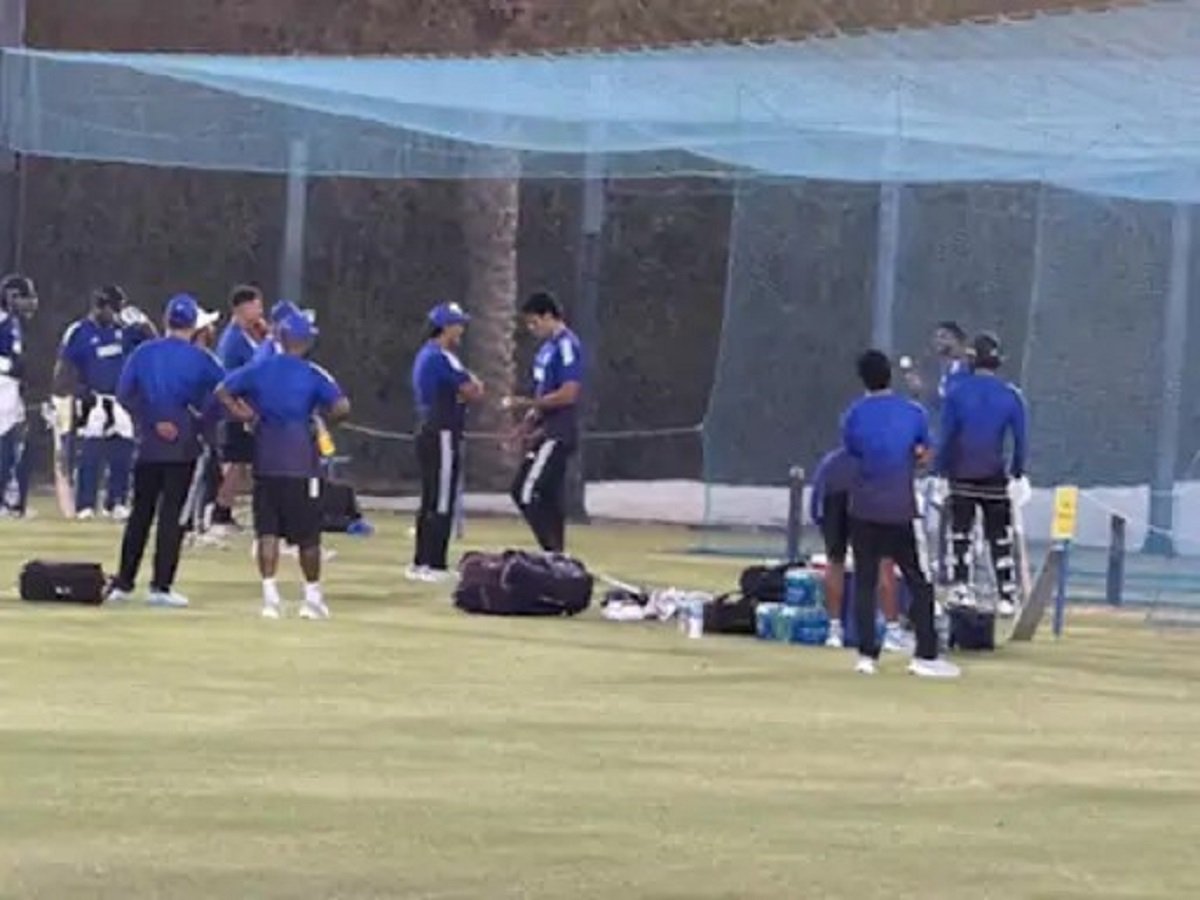
Contents
Dubai,Sep.06,2025: India Asia Cup 2025 Training Begun with a high-octane showdown at the ICC Academy in Dubai, serving as the springboard into a crucial T20 campaign. This opening salvo was rich in energy, ambition, and a bursting spirit of teamwork.
Returning Stars and Fresh Faces
In a thrilling first collective session—the first since their England Test series concluded in late August—skipper Suryakumar Yadav, vice-captain Shubman Gill, Sanju Samson, Tilak Varma, Abhishek Sharma, Jitesh Sharma, and Shivam Dube hit the nets for extensive batting and fielding drills.
The hiatus allowed many senior players, including Gill and Jasprit Bumrah, much-needed rest—Bumrah’s return to T20 action adds particular excitement, after starring in the 2024 T20 World Cup final.
India Asia Cup 2025 Training Begun – The Nets Battle Highlights
In the scorcher of Dubai, net sessions were more than routine. Gill’s poised cover drives met Bumrah’s sharp bouncing deliveries. A balance of finesse and pace electrified the pitch, demonstrating how India Asia Cup 2025 Training Begun is as much about skill as resilience.
Lighting Up Practice: Gill vs Bumrah Face-Off
The net battle between vice-captain Gill and pace spearhead Bumrah stood out:
- Gill teased “Stiff legs,” sparking laughter and light-hearted rivalry.
- Bumrah responded with dives, sprints, and pace, upping the competitive stakes.Meanwhile, Sanju Samson observed wicketkeeping drills beside Jitesh Sharma—both competing tightly for starting XI spots.
Acclimatisation Over Camp – Why Dubai?
Instead of a domestic camp at BCCI’s Centre of Excellence, the team opted for Dubai’s environment to adjust to similar conditions as the tournament’s venues. The training took place at ICC Academy in Dubai Sports City, a world-class facility equipped with floodlit turf, indoor nets, and tech-assisted analysis.
Team Bonding, Strategy & Leadership
Standing strong as defending champions, Team India is forging strategic cohesion under head coach Gautam Gambhir’s guidance:
- Gambhir urged players to “seize every opportunity”, bringing mental sharpness to the fore.
- Shivam Dube noted the atmosphere was electric, helping them feel “back” in the game.
- Skipper SKY emphasized the team’s fearless approach: “unbelievable skill sets” and putting “body on the line.”
Plus, Hardik Pandya and Sanju Samson’s fresh hairdos captured media buzz—proof that even grooming makes a mark in modern cricket.
Match Schedule and Stakes
India Asia Cup 2025 Training Begun is just the opening act. The match schedule is fierce:
- India vs UAE — September 10, Dubai
- India vs Pakistan — September 14, Dubai
- India vs Oman — September 19, Abu Dhabi
- The Super 4 stage runs September 20–26, with finals on September 28 in Dubai.
Momentum & Aspiration
India Asia Cup 2025 Training Begun signals more than practice; it’s a statement of intent. From seasoned stalwarts to youthful all-rounders, Team India is combining grit, strategy, and harmony to defend their T20 crown.
As rivalries loom—most notably against Pakistan—these rigorous sessions also build the resilience essential in high-stakes cricket. With powerful team spirit and tactical sharpness, India aims not only to compete but to dominate.
Cricket
Asia Cup 2025: Team India Squad Announced
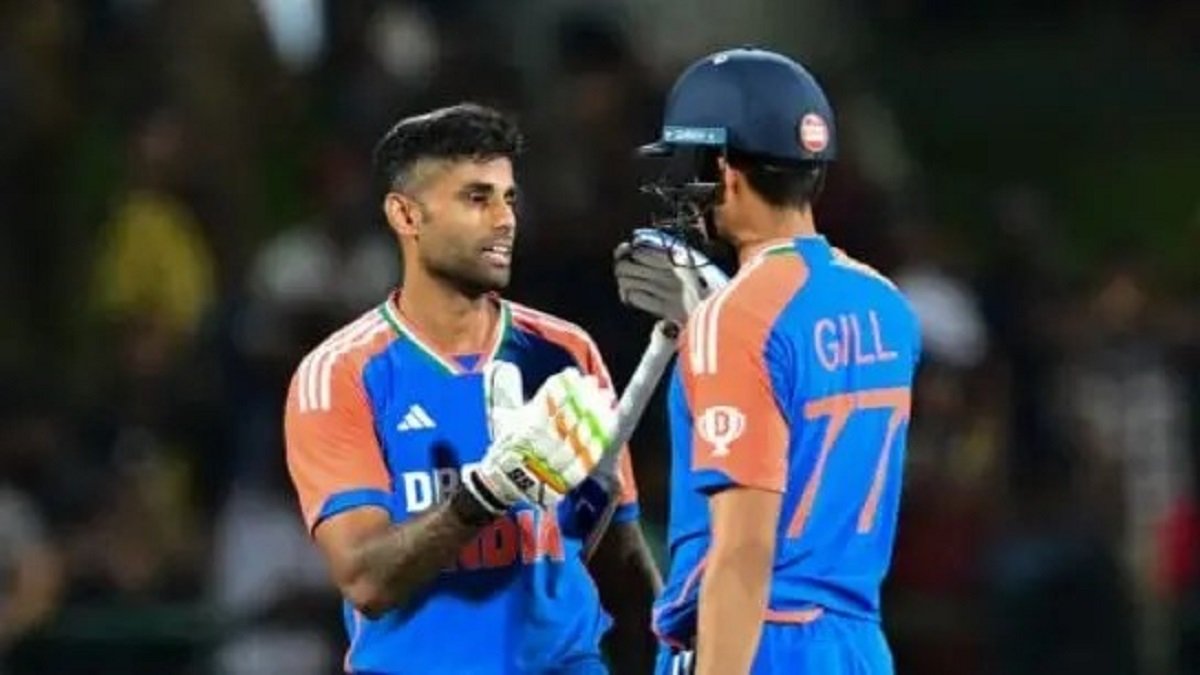
Contents
New Delhi, Aug.19,2025: Asia Cup 2025 team India squad has officially been announced by the Board of Control for Cricket in India (BCCI). The selection committee has made some bold and exciting decisions, with Suryakumar Yadav appointed as captain and Shubman Gill as vice-captain for the upcoming tournament. The much-anticipated Asia Cup 2025 will be hosted in the UAE from September 9 to September 28, with India set to showcase a well-balanced squad of experienced stars and young guns.
Surya kumar Yadav as Captain – A Bold Choice
Suryakumar Yadav, popularly known as SKY, has been rewarded for his consistency and aggressive T20 batting style. Appointing him as the captain for Asia Cup 2025 reflects India’s intent to embrace attacking cricket. SKY’s ability to handle pressure situations, his unorthodox stroke play, and his leadership experience in domestic cricket make him an ideal choice to lead the Men in Blue.
Shubman Gill’s New Role as Vice-Captain
Shubman Gill, one of India’s most promising young batters, has been named vice-captain for Asia Cup 2025. Known for his elegant batting technique and ability to anchor innings, Gill’s promotion indicates the selectors’ long-term vision to groom him as a future leader of Indian cricket.
Strength of India’s Batting Line-up
The Asia Cup 2025 team India squad features a strong batting unit led by Suryakumar Yadav and Shubman Gill. Power-hitters like Rinku Singh and Tilak Varma add depth, while the experience of Hardik Pandya will play a vital role in middle-order stability. Abhishek Sharma, with his recent form, is also expected to provide quick runs at the top.
All-Rounders Adding Balance
One of the highlights of the squad is the presence of multiple all-rounders. Hardik Pandya, Shivam Dube, and Axar Patel bring in the perfect balance of batting and bowling depth. Their ability to contribute in both departments will be crucial, especially in conditions like the UAE where adaptability is key.
India’s Bowling Attack: Pace and Spin Combination
The bowling unit of the Asia Cup 2025 team India squad looks formidable. Jasprit Bumrah will spearhead the pace attack, supported by Arshdeep Singh and Harshit Rana. For spin duties, Kuldeep Yadav and Varun Chakaravarthy have been picked, ensuring India has quality options for middle overs.
Wicketkeeping Options: Jitesh Sharma and Sanju Samson
India has gone ahead with two wicketkeeping options for the Asia Cup 2025. Jitesh Sharma and Sanju Samson provide depth and flexibility. Both players are known for their hard-hitting abilities, which can be crucial in the T20 format.
Young Talents to Watch Out For
Names like Tilak Varma, Rinku Singh, and Harshit Rana stand out as rising stars who could make a big impact. Their performances in the Indian Premier League (IPL) and domestic tournaments have earned them a well-deserved place in the squad.
Asia Cup 2025 Schedule and Venue
The Asia Cup 2025 will take place in the United Arab Emirates (UAE), with matches starting from September 9. The grand finale is scheduled for September 28, 2025. The hot and challenging UAE conditions will test the players’ fitness and adaptability.
Read More about Asia Cup 2025 Schedule
Expectations from Team India
With a mix of youth and experience, the Asia Cup 2025 team India squad looks strong on paper. The leadership of Suryakumar Yadav, support from Shubman Gill, and the lethal bowling attack led by Jasprit Bumrah provide India with a competitive edge. Fans are eagerly waiting to see how India performs against Asian rivals like Pakistan, Sri Lanka, and Bangladesh.
The Asia Cup 2025 team India squad announcement has created a buzz among cricket fans. With Suryakumar Yadav leading the side and Shubman Gill as vice-captain, the team represents a blend of aggression, stability, and talent. If the players perform to their potential, India could be strong contenders for lifting the Asia Cup trophy.
Cricket
Bengaluru Chinnaswamy Stadium Stampede: 11 Dead, 33 Injured in RCB Victory Parade Chaos
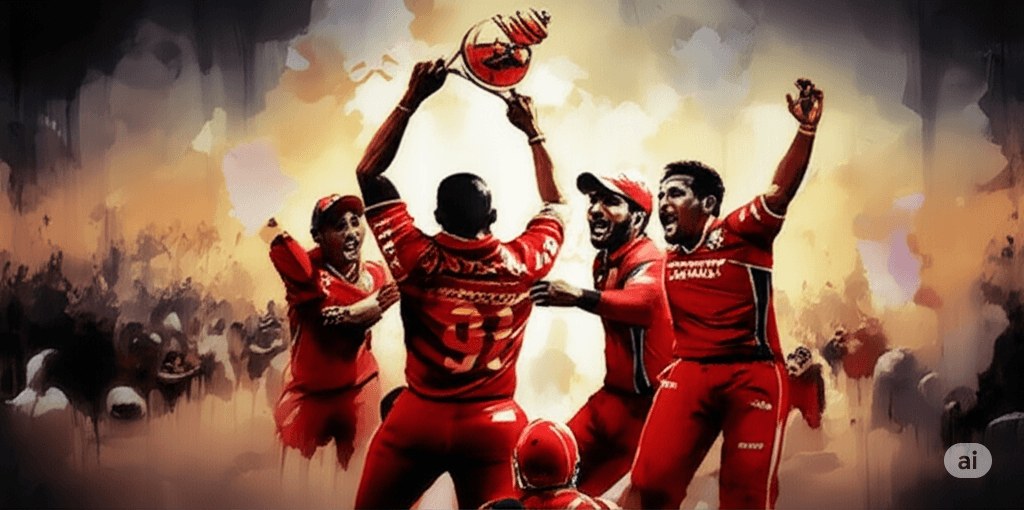
Contents
June 6, 2025 , Credent Story desk : What was meant to be a historic day for Royal Challengers Bengaluru (RCB) fans celebrating their first-ever IPL trophy turned into a nightmare on June 4, 2025. A massive stampede outside Bengaluru’s iconic M. Chinnaswamy Stadium claimed 11 lives and left at least 33 injured, casting a pall over the city’s cricketing triumph
How the Bengaluru Stampede Unfolded
Overwhelming Crowd and Last-Minute Changes
The tragedy struck as lakhs of fans—estimates suggest over 3 lakh, nearly ten times the stadium’s capacity—gathered for a victory parade and public felicitation of the RCB team. Originally, the celebrations were to include an open bus parade from Vidhana Soudha to the stadium. However, citing security and traffic concerns, Bengaluru Police denied permission for the street procession, prompting organizers to abruptly shift the event inside the stadium.
Free Entry Announcement Sparks Chaos
At around 3:14 pm, RCB’s social media announced free entry passes for the event, triggering a surge of fans to the stadium gates. With no clear entry plan and a limited security presence, the crowd swelled dangerously. By 3:30 pm, all gates were closed, and fans—many without tickets—began pushing against the barricades, desperate to enter
The Deadly Crush
The situation spiraled out of control at several gates, particularly Gate 3 and Gate 20, where the pressure of the crowd caused barricades to collapse. Eyewitnesses described scenes of panic as people were trampled, some fainted, and ambulances struggled to reach the injured due to overcrowded roads. Police resorted to mild lathi charge in attempts to disperse the surging crowd. By 5 pm, the full extent of the tragedy became clear: 11 people had lost their lives, and dozens more were injured
Victims and Aftermath
Who Were the Victims?
All 11 people who died were under the age of 40, including teenagers and young adults, with the youngest victim just 13 years old. Over 33 others sustained injuries ranging from fractures to severe trauma, with many still recovering in hospitals across the city.
Human Stories Amidst the Tragedy
Venu, a survivor now hospitalized with a leg fracture, recounted, “We went to watch the event near gate no. 6 around 3:30 pm. The barricade fell and caused injury to me. I’m better now, but I can’t walk”. Families rushed to hospitals, anxiously seeking news of loved ones, as the city grappled with the aftermath.
Political Fallout and Official Response
Government and Police Under Fire
The stampede has sparked a political storm in Karnataka. The opposition BJP accused the Congress-led state government of gross mismanagement and ignoring obvious security risks, with BJP President B Y Vijayendra stating, “Even a child could have foreseen the massive turnout”. The government, meanwhile, has suspended top police officials, including the Bengaluru Police Commissioner, and appointed a new chief in response to public outcry.
Probe and Accountability
Chief Minister Siddaramaiah announced a one-member commission to investigate the incident and ensure accountability. The Bengaluru Police have filed a suo moto case against RCB, the Karnataka State Cricket Association (KSCA), and event organizers DNA Entertainment. The Karnataka High Court has also taken suo moto cognizance and is hearing the case to determine lapses and fix responsibility.
Image for reference only
Read More on bengalurus

 Breaking News1 month ago
Breaking News1 month agoKanya Pujan 2025 Step-by-Step Rituals, Timings, and Powerful Benefits Explained-

 Breaking News1 month ago
Breaking News1 month agoShoaib Akhtar criticism, Pakistan vs India Asia Cup 2025-

 Breaking News1 month ago
Breaking News1 month agoJoganiya Mata history reveals her connection to the Hada dynasty, sacred legends, and evolving rituals at Chittorgarh’s revered temple-

 Breaking News2 weeks ago
Breaking News2 weeks agoDhanteras Diya Rituals 2025 Seven Powerful Steps to Light Lamps & Gain Prosperity-

 Breaking News1 month ago
Breaking News1 month agoCelebrate Chamunda Mata Ji Temple Navratri 2025 with nine days of spiritual devotion, cultural festivities-

 Breaking News1 month ago
Breaking News1 month agoAbhishek Sharma’s explosive 75 runs secured India’s spot in the Asia Cup 2025 Final- Will India face Pakistan or Bangladesh next-

 Breaking News1 month ago
Breaking News1 month agoBijasan Mata Temple, a 2000-year-old shrine revered as the Kuldevi of Holkars, Gadariya community, and devotees across India-

 Breaking News3 weeks ago
Breaking News3 weeks agoKarwa Chauth 2025 Complete Puja Vidhi, Moonrise Time, Rituals & Vrat Story for a Blessed Fast-






























